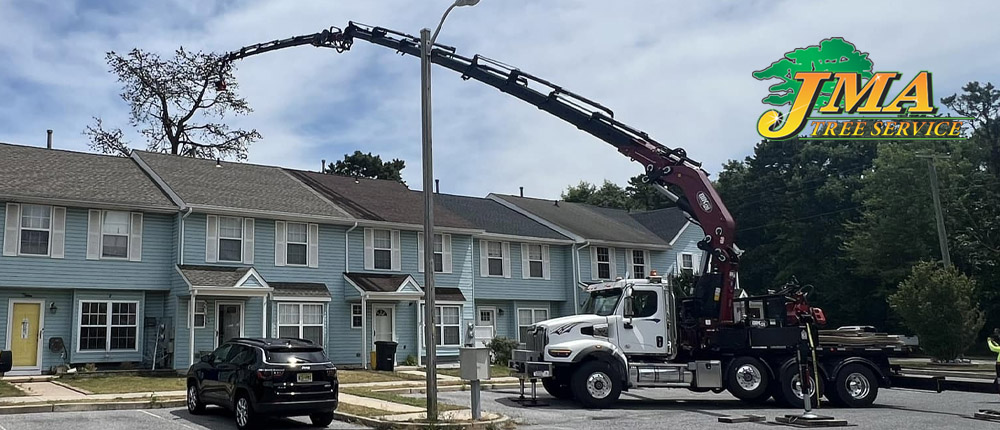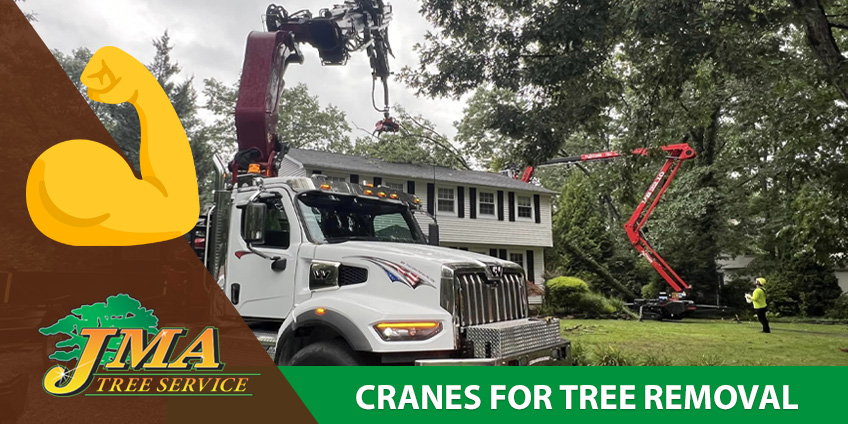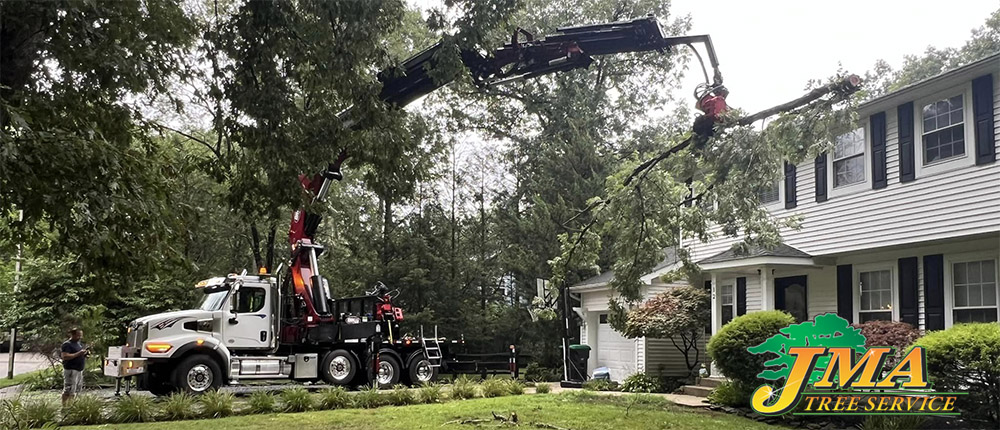Tree removal can be a daunting task, especially when dealing with large, hazardous, or difficult-to-access trees. For these scenarios, cranes are often the most effective solution. Using cranes for tree removal not only enhances safety but also increases efficiency. This guide will explore the benefits, techniques, and considerations of using cranes for tree removal, providing valuable insights for both homeowners and professionals.
Why Use Cranes for Tree Removal?
Using cranes for tree removal offers several advantages over traditional methods. First and foremost, cranes provide a safer way to handle large trees. Instead of climbing or cutting trees from the ground, a crane can lift the tree in sections, minimizing the risk of accidents. Additionally, cranes reduce the time required for tree removal, making the process more efficient and cost-effective.
Cranes are also ideal for removing trees in confined spaces or hard-to-reach areas. When trees are surrounded by buildings, power lines, or other obstacles, a crane can safely lift and move the tree without causing damage to surrounding structures. Moreover, using a crane minimizes the impact on the landscape, preserving lawns, gardens, and other features.
How Cranes Work for Tree Projects
When it comes to tree removal, cranes are used in a strategic and calculated manner. The process typically involves the following steps:
- Assessment and Planning: Before the tree removal begins, a thorough assessment of the site is conducted. This involves evaluating the tree’s condition, size, location, and the surrounding environment. Based on this assessment, a plan is developed to determine the best approach for using the crane.
- Setting Up the Crane: Once the plan is in place, the crane is brought to the site and positioned appropriately. It’s crucial to ensure that the crane is set up on stable ground to prevent any accidents during the lifting process.
- Securing the Tree: The crane operator and the ground crew work together to secure the tree with cables and harnesses. The tree is then cut into manageable sections, starting from the top.
- Lifting and Removal: The crane lifts each section of the tree and moves it to a designated drop zone, where it can be safely processed and removed from the site.
- Final Cleanup: After the tree is removed, the site is cleaned up, and any remaining debris is cleared. This ensures that the property is left in good condition, with minimal disruption to the surrounding area.
Benefits of Using Cranes for Tree Projects
There are several key benefits to using cranes for tree removal, making it an attractive option for both residential and commercial properties.
Enhanced Safety
Safety is paramount in tree removal, especially when dealing with large or dangerous trees. Cranes eliminate the need for climbing or working from heights, significantly reducing the risk of falls and injuries. Additionally, cranes allow for precise control over the tree removal process, minimizing the chance of accidents.
Increased Efficiency
Cranes streamline the tree removal process, reducing the time and labor required. Traditional methods can take hours or even days to remove a large tree, but with a crane, the job can often be completed in a fraction of the time. This efficiency also translates to cost savings, as less time on-site means lower labor costs.
Versatility in Challenging Situations
Cranes are incredibly versatile and can be used in various challenging situations. Whether the tree is located in a tight space, near power lines, or on uneven terrain, cranes provide the flexibility to remove the tree safely and effectively. This versatility is particularly valuable in urban environments, where space is limited, and obstacles are common.
Choosing the Right Crane for Projects
Selecting the right crane for tree removal is essential to ensure a safe and successful operation. Several factors should be considered when choosing a crane:
Load Capacity
The crane’s load capacity is a critical factor, as it determines how much weight the crane can safely lift. The size and weight of the tree will dictate the necessary load capacity. It’s important to choose a crane that can handle the heaviest sections of the tree without straining the equipment.
Reach and Height
The crane’s reach and height are also important considerations, especially when dealing with tall trees or trees located in difficult-to-access areas. The crane must be able to extend high enough to reach the top of the tree and have sufficient reach to maneuver around obstacles.
Terrain and Access
The terrain and access to the site are other factors to consider. Some cranes are better suited for rough or uneven terrain, while others require a stable, flat surface. It’s essential to choose a crane that can be safely positioned on the site and has adequate access to the tree.

Hiring a Professional Crane Service for Tree Removal
When it comes to using cranes for tree removal, hiring a professional service is highly recommended. Professional crane operators have the experience and expertise to safely and efficiently remove trees using cranes. They are also familiar with local regulations and can ensure that the removal process complies with all safety and environmental standards.
What to Look for in a Crane Service
When selecting a crane service for tree removal, there are several factors to consider:
- Experience and Expertise: Look for a service with extensive experience in tree removal and crane operation. Experienced professionals are better equipped to handle complex or challenging situations.
- Safety Record: A strong safety record is crucial. Ensure that the crane service follows strict safety protocols and has a good track record of accident-free operations.
- Proper Licensing and Insurance: Verify that the crane service is properly licensed and insured. This protects you from liability in the event of an accident or damage during the tree removal process.
- Customer Reviews and References: Check customer reviews and ask for references to gauge the quality of the service. Positive reviews and satisfied customers are good indicators of a reliable and professional service.
Conclusion: The Advantages of Cranes for Tree Removal
Cranes for tree removal offer a safe, efficient, and versatile solution for dealing with large or difficult trees. Whether you’re a homeowner facing a hazardous tree on your property or a professional arborist looking for the best way to handle a challenging removal, cranes provide a valuable tool that can simplify the process. By understanding the benefits and considerations of using cranes, you can make informed decisions and ensure a successful tree removal project.
For more information on tree removal services or to schedule a consultation, contact JMA Tree Removal. By choosing the right crane and experienced operators, you can tackle even the most challenging tree removal projects with confidence. Call today (609) 9297728 or use the form below to receive an estimate.



